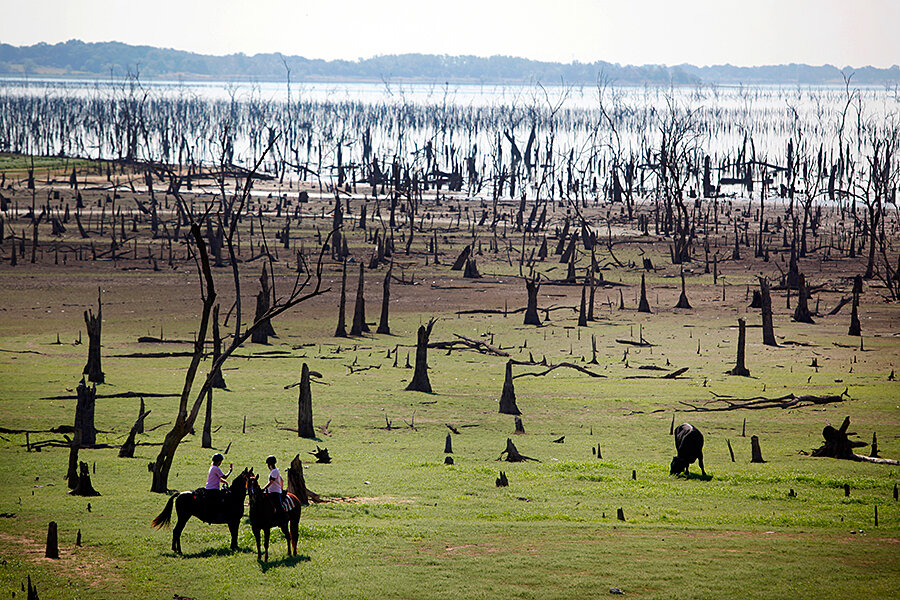Texas drought eases, but is relief in sight for California?
Loading...
For the first time in almost three years, Texas is no longer suffering from 'exceptional drought' or 'D4' conditions.
On Thursday, the United States Drought Monitor, reported that only small pockets in central and northern Texas were still mired in "extreme drought-D3" conditions as of Tuesday. Exceptional drought status is the worst designation the Drought Monitor can give – extreme drought is one step up on the five-step scale.
A recent spell of rain has improved conditions in Texas – the Houston area has received more than 10 inches of rain this week, and Corsicana received 11, the Associated Press reported. Lake Arrowhead and Lake Kickapoo, which primarily provide water for the city of Wichita Falls were back up to 50 percent of their combined water capacity on Tuesday following the rain.
Just one year ago, a large swath of northern Texas was still suffering from D4 conditions, according to the Drought Monitor. However, Texas's drought reached its worst in 2011 when nearly the entire state was stuck in D4 conditions from May until the end of the year. The Atlantic's "The Wire" reported at one point in October 2011, 88 percent of the state was engulfed in D4 conditions. This led to more than a $7.6 billion loss in agricultural production on the part of Texas farmers, according to Texas A&M University AgriLife report.
But as the rain has brought relief to many in Texas, much of California remains in very dry D4 conditions with no end in sight. Tuesday's drought measurement (released Thursday) depicts nearly the entire state in either D4 or D3 conditions.
So what is fueling California's drought, and is there relief on the horizon?
The main culprit is the depleted snowpack that traditionally supplied California with nearly a third of it's water supply, according to Southern California Public Radio. On April 1, the California Department of Water Resources measured the snowpack, and it was revealed that the statewide snowpack at the beginning of April stood at only five percent of the historical average of 28.3 inches of water content, according to a department press release. The previous lows were 25 percent, recorded in 1977 and again in 2014.
As a response Calif. Governor Jerry Brown issued an executive order calling for cities and towns to reduce water usage by 25 percent, the Christian Science Monitor reported. However, in a state where 80 percent of the water is used up by agriculture, a municipal reduction of water may not be enough to solve the crisis.
"It takes years to get into a drought of this severity, and it will likely take many more big storms, and years, to crawl out of it," Jay Famiglietti, a researcher at the Jet Propulsion Laboratory, told the AP.






